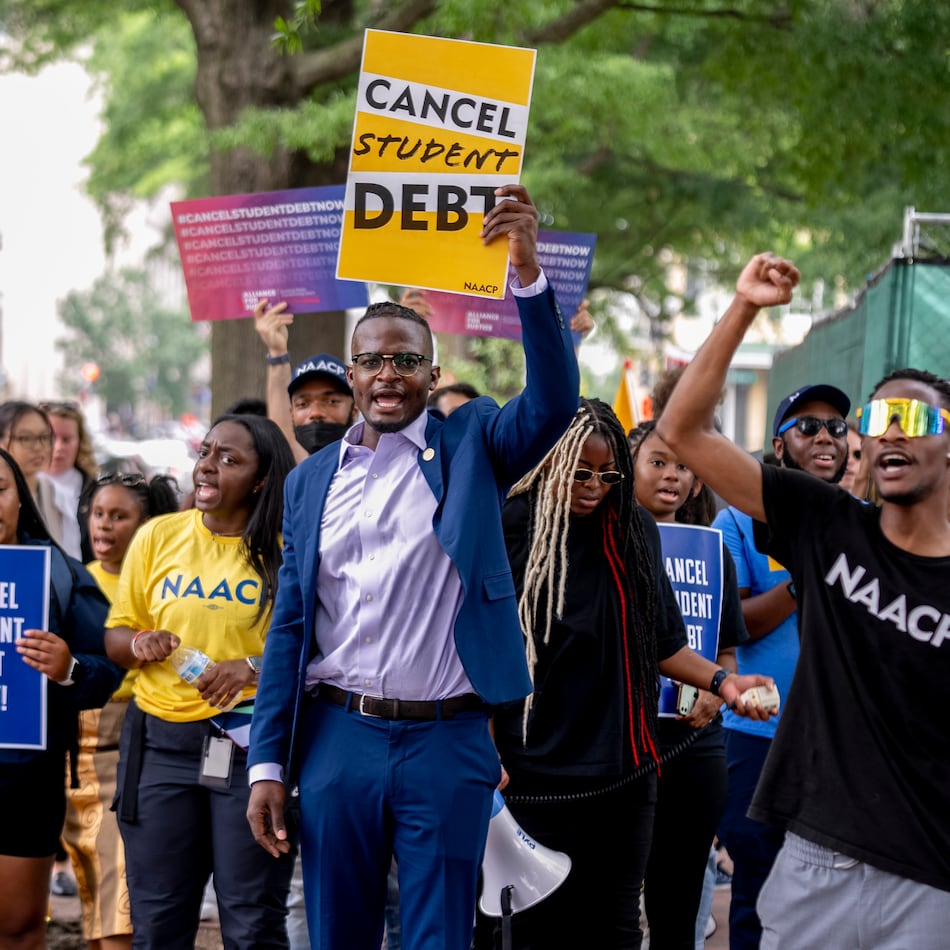A Timeline of Georgia’s Voter ID Law
April 2005: Gov. Sonny Perdue signs a law requiring Georgia voters to present a valid, state-issued photo ID to cast an in-person ballot. The bill passed in the state Legislature along a largely party-line vote. Previously, voters in Georgia had been able to present one of 17 forms of ID to vote, including some without photos, such as utility bills.
August 2005: The U.S. Department of Justice OKs the law. (All changes affecting voting in the state are subject to federal review under the 1965 Voting Rights Act.) An internal memo later reveals that some staff attorneys raised concerns that the new law could dilute minority turnout.
September 2005: Opponents file a federal lawsuit claiming the law is unconstitutional, violating the Equal Protection Clause. They liken the requirement that voters pay a fee for a state-issued photo ID to Jim Crow-era poll taxes.
October 2005: U.S. District Court Judge Harold Murphy holds that Georgia’s voter ID law amounts to an unconstitutional poll tax and blocks its enforcement.
January 2006: The state Legislature adopts a new voter ID law that provides free state-issued photo identifications cards in all Georgia’s 159 counties. Gov. Perdue signs the new measure into law.
July 2006: Judge Murphy again blocks enforcement of law, saying it continues to discriminate against people who don’t have driver’s licenses, passports or other government IDs. But Murphy suggests that a meaningful education effort to explain the law to Georgians might change his mind.
June 2007: A separate state challenge to the law filed by former Gov. Roy Barnes is dismissed by the Georgia Supreme Court, which finds that the plaintiff, Rosalind Lake, lacks standing to bring the lawsuit.
August 2007: Georgia Secretary of State Karen Handel launches an outreach effort to educate voters about the photo ID law and ways for citizens to obtain a free photo ID.
September 2007: Judge Murphy finds that the law passes constitutional muster. The law takes effect for the first time in municipal elections in 23 Georgia counties.
February 2008: The law faces its first statewide test in the state’s presidential preference primary.
April 2008: The U.S. Supreme Court in a 6-3 ruling upholds Indiana’s voter ID law, which is similar to Georgia’s. The ruling is seen as validation of photo ID laws generally.
December 2011-present: The U.S. Department of Justice blocks voter ID laws in South Carolina and Texas but OKs Virginia’s voter ID law. Legal challenges are pending against voter ID laws in Pennsylvania and Wisconsin.
When Georgia became one of the first states in the nation to demand a photo ID at the ballot box, both sides served up dire predictions. Opponents labeled it a Jim Crow-era tactic that would suppress the minority vote. Supporters insisted it was needed to combat fraud that imperiled the integrity of the elections process.
But both claims were overblown, according to a review of by The Atlanta Journal-Constitution of statewide voting patterns in the five years since the law took effect.
Turnout among black and Hispanic voters increased from 2006 to 2010, dramatically outpacing population growth for those groups over the same period.
On the other hand, Georgia’s top elections official could not point to a single case of ballot fraud the voter ID law had prevented.
“I think the rhetoric on both sides has been overstated,” said Edward Foley, executive director of an election law center at The Ohio State University’s Moritz College of Law.
“It hasn’t had the voter-suppressing effect that some people feared,” Foley said. Conversely, he said, rhetoric about voter fraud has largely proven to be a “scare tactic” with little basis in fact.
Still, the law has had real and measurable effect for some voters: Since November 2008, the ballots of 1,586 Georgians didn’t count because of the law. (They arrived at the polls without a photo ID, cast provisional ballots, and did not return later with the required ID.) Overall, 13.6 million votes were cast in the state during the same period.
POLARIZING NATIONAL ISSUE
Few rights are held as sacred in the United States as the right to vote. And in this sharply polarized election season, voter ID laws have taken on an unusually high national profile.
Democratic Vice President Joe Biden railed against voter suppression efforts at an appearance before a receptive audience at the NAACP’s annual convention in July. Labeling voter fraud “poison,” the GOP made support of voter ID laws a plank in its party platform, which convention delegates adopted in Tampa this week.
Both sides are appealing to their base. Democrats, by and large, oppose the laws, saying they target reliably liberal constituencies: the poor and minorities, who are less likely to have a drivers license or other photo ID. Republicans maintain that without the laws, people not registered, or even legally eligible, cast votes by posing as someone who is registered.
Seven states adopted or strengthened voter ID laws in 2011. The National Conference of State Legislatures says that 33 states now have voter ID laws, although some are far more strict than others.
Georgia, considered one of the toughest, requires that anyone voting in person have a state-issued photo ID for their ballot to count. Photo identification is not required to cast an absentee ballot in Georgia.
Legal battles have erupted over many of the laws. In recent months, voter ID laws in the swing states of Pennsylvania and Wisconsin have been winding through the courts. The U.S. Department of Justice signed off on a law in the battleground state of Virginia, that state’s governor said, but rejected voter ID laws in South Carolina and Texas. On Thursday a federal court also ruled against Texas’ law, saying it could suppress turnout among Hispanic voters.
TURNOUT
Georgia first adopted a voter ID law in 2005 and won court approval to implement it in 2007. The law has now been in place for two major statewide general elections: 2008, when the presidential race was on the ballot, and 2010, when voters selected a new governor. Prior to the new law, voters had been able to present one of 17 forms of identification, including a utility bill.
Elections data reviewed by the AJC show that participation among black voters rose by 44 percent from 2006 — before the law was implemented — to 2010. For Hispanics, the increase for the same period was 67 percent. Turnout among whites rose 12 percent.
It was expected that African American turnout would spike in 2008, when Barack Obama became the first person of color to win the presidency. And it did rise to historic highs in Georgia.
Black participation fell in 2010, as it did for all demographic groups. Still, a far greater share of black voters turned out in 2010 than in 2006, showing that Obama was not the only factor driving turnout.
“If you look at the numbers, they clearly show that critics of this law were wrong,” Hans von Spakovsky, a former legal counsel to the Justice Department’s civil rights division who now works for the conservative Heritage Foundation. “Their argument has always been it would depress turnout, but it didn’t happen — quite the opposite.”
Still, those who oppose the law caution against reading too much into the turnout figures. They argue that the numbers fail to capture Georgians who, lacking a photo ID, simply didn’t bother showing up to vote at all.
Emmet Bondurant, the Atlanta lawyer who filed the federal lawsuit against the Georgia law, noted that that records obtained as part of their lawsuit showed that more than 198,000 registered Georgia voters lacked drivers licenses and another 91,000 had had their licenses suspended or revoked.
As a way to win federal court approval for the law, Georgia offers free photo IDs to anyone who needs them. Records obtained through the Secretary of State’s office show that 26,506 Georgians have obtained free photo IDs since the law took effect.
The others, who can no longer vote, “didn’t just disappear,” Bondurant said. He calls them victims of voter suppression.
NOT ALL VOTES COUNT
Under Georgia’s law, an in-person voter who arrives at the polls without a photo ID may cast a provisional ballot. The provisional ballot is counted only if the person returns with proper identification by the Friday following the election.
Records show that since 2008, 2,244 provisional ballots were cast by voters lacking photo ID. Of those, 658 returned with an ID and 1,586 did not — meaning their votes did not count.
That disturbs Laughlin McDonald, director of the Voting Rights Project of the American Civil Liberties Union, one of the original plaintiffs who challenged the law.
“If one person is deprived of their right to see their vote count, that’s a violation of the Constitution,” McDonald said.
Georgia Secretary of State Brian Kemp said law has been a success, although he could not identify specific instances of fraud it had prevented.
“There is no doubt in my mind that our voting process is more secure because of photo ID,” he told The AJC in an interview. “The people of Georgia are plenty capable of obtaining a (photo) ID. I think most of them already have one, and I don’t think its a real big burden to get one.”
Some academics caution against drawing conclusions about the impact of voter ID from so little data.
Justin Levitt, an election law expert at Loyola Law School in Los Angeles, called 2008 a “tidal wave” election for minority voters because of Obama. It will take time, he said, before the effect of voter ID can be parsed out from other factors that drive turnout.
“We need a big enough data set that it will squeeze out that extra noise,” Levitt said. “And that is going to take some time.”
About the Author
Keep Reading
The Latest
Featured



